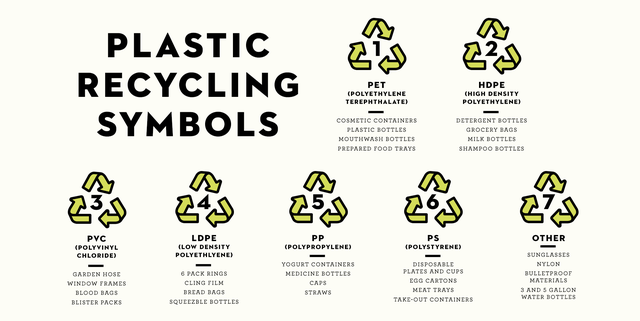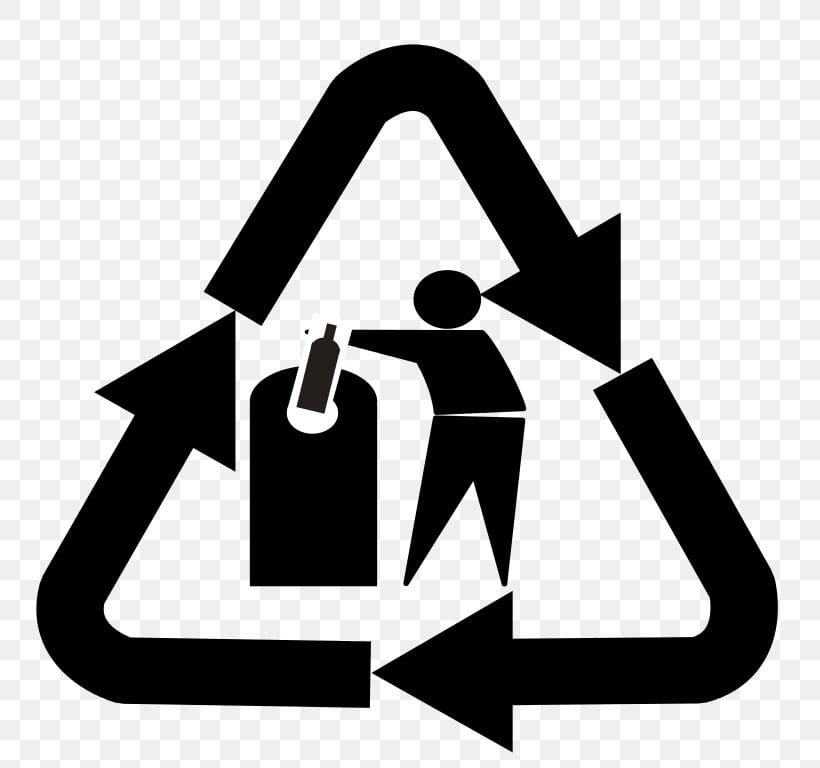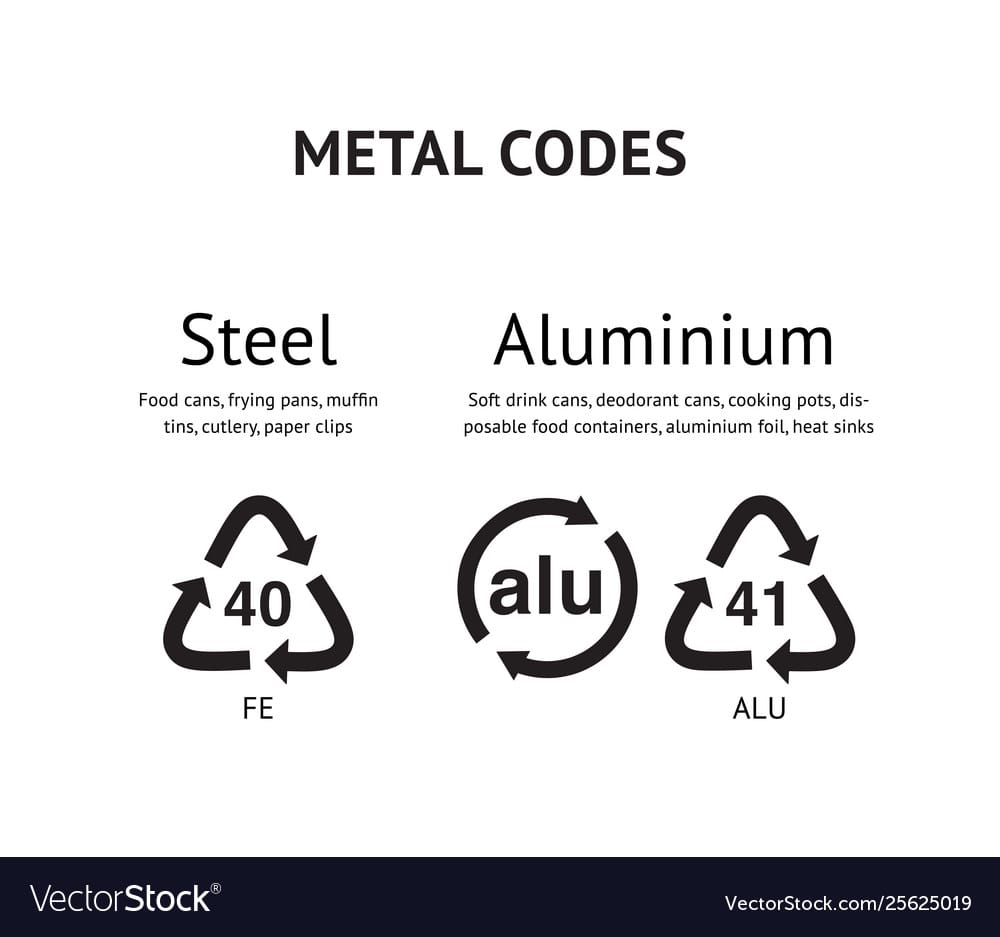All About Recycling: Symbols, Facts, and Tips

Every day, various types of products are packaged and shipped to customers. People use it and then throw it away without thinking much about it. However, most people don't know that there are specific ways to recycle packaging. You can't recycle all the packaging using the same method.
Yes, that's true.
There's huge emphasis on recycling and reducing waste. With recycling, you can save resources; it sends less trash to landfills, which eventually keeps our environment pollution-free.
But how can you play your part?
By being knowledgeable and understanding the fundamentals of recycling. It helps both consumers and businesses to reduce their carbon footprint.
In this blog, we'll share some of the most important things you should know about recycling. From symbols to tips that you can implement to reduce the waste. All this and much more about the recycling world.
So let's get started.

Source: conserve-energy-future
What Is Recycling? And How Do You Do It?
Recycling is converting waste into reusable materials or products to prevent the disposal of potentially useful resources as waste. It involves collecting, processing, and transforming materials like paper, glass bottles, plastic, and metal into new products. So here's how it goes.
Collecting waste material → Processing it → Transforming material →, e.g., paper into new product
However, there's another thing most people get wrong: sorting the rubbish properly. The items that can be recycled should be inside relevant bins, while everything else should be in other general waste bins.
It ensures each type of waste goes into a relevant recycling facility. So here's what happens:
- Trash usually ends up in a landfill or gets burned in an incinerator.
- Things like food scraps can be turned into compost.
- Items that can be recycled are separated and sent to recycling companies. These companies change them into raw materials to make new things we can use.
But what materials can be recycled?
The answer varies greatly depending on the area you live in, the area's environment, etc. However, contact your local waste disposal center for more accurate information.
Organic waste, plastic, glass, paper, clothes, batteries, and oil can be recycled. There are specific bins for each recycling center.
7 Recycling Symbols You Must Know
Have you ever looked at a recycling symbol and unsure what that means?
Let's understand it better.
Recycling symbols are special markings on products that show if an item can be recycled. These symbols guide us in sorting and recycling items to reduce waste and promote environmental sustainability. Let's break them down.
1. Recycle

Source: suncatcherstudio
The label added to the packaging is collected by 75% or more local authorities. This packaging is then sorted, processed, and recycled into new materials.
Thus contributing to the reduction of overall waste. It's a visual cue that promotes the recycling of materials.
2. Don't Recycle

Source: mrw
It is applied to packaging which cannot be recycled. But what's the reason behind that?
Because that packaging can't be sorted, processed, and recycled efficiently, in this case, items are already highlighted as not being included in regular recycling bins. Thus, consumers must dispose of them using alternative means.
3. Recycle | Rinse
It is a sign to encourage people to rinse recyclable packaging. It includes materials such as yogurt pots and soup tins.
But why should you rinse?
It's because, through rinsing, all the food material and residue is removed from the product. It ensures the material is clean, especially when collected alongside the paper.
4. Plastic Resin Code

Source: goodhousekeeping
These are also known as 'Resin Identification Code.' It is used for the identification of types of plastic resin. It is shown with 'chasing arrows' symbols. Numbers from 1 to 7 are denoted, defining every resin.
- PET (Polyethylene Terephthalate): Commonly used for beverage bottles, such as water and soda bottles. Recycled into products like fleece jackets, carpet fibers, and new PETE containers.
- HDPE (High-Density Polyethylene): Found in milk jugs, detergent bottles, and plastic bags. Recycled into products like plastic lumber, pens, and recycling plastic containers.
- PVC (Polyvinyl Chloride): Often used in pipes, outdoor furniture, and some packaging. Recycling PVC can be challenging, and not all recycling programs accept it.
- LDPE (Low-Density Polyethylene): Used in plastic bags, shrink wrap, and some containers. Recycled into garbage can liners, compost bins, and plastic lumber.
- PP (Polypropylene): Commonly found in yogurt cups, bottle caps, and packaging. Recycled into signal lights, battery cases, and brooms.
- PS (Polystyrene): Used in foam packaging, disposable plates, and cups. Recycling PS can be limited and often not accepted in curbside programs.
- Other: This category includes various plastics that don't fit the other six categories. Some #7 plastics may contain harmful substances, and recycling practices vary.
5. Glass Recycling

Source: favpng
It highlights that packaging is made from glass and should be recycled. However, glass jars and bottles should be cleaned and sorted based on colors.
You can create separate recycle bins or bottle banks for this material recycling.
6. Recyclable Aluminum
It's for aluminum, which is easy to recycle. Some of the most common examples include foil packaging and beverage cans.
7. Recyclable Steel
Through this, consumers can be aware of the material of the product. It shows that the product is made from steel and is recyclable.
It includes clean and loose steel food cans and lids to be placed in recycling bins.

Source: vectorstock
5 Fast Facts and Stats on Recycling
The recycling world is full of facts and stats that will shock you. We have compiled five fast facts that you must know.
1. Largest Dumping Site Is An Ocean
When dumping sites are discussed, most people assume they must be landfills. Full of garbage and nothing else. But that's not true.
The Great Pacific Garbage Patch is the 'trash vortex' in the North Pacific Ocean. Materials such as bottles, tins, and cans are discarded at the Pacific Rim. This material eventually makes its way to the Pacific Ocean.
It was first discovered in the 1990s. The most amount of plastic in the Pacific Ocean comes from Asian countries. A large number of single-use plastics are less dense in comparison to water. Due to this, it keeps floating on the surface.
The consequences become even worse when this plastic is exposed to the sun. It disintegrates into various microplastics, which disrupts the marine ecosystem.
According to a study, if this continues, then by 2025, the quantity of plastic in the ocean will be much higher than fish.
2. Plastic Waste Can Cover Planet 4 Times
Can you imagine the amount of plastic enough to go over the planet around four times?
That's the amount of plastic that is discarded over a year. Plastic production has increased 200-fold within only the past five decades.
Surprisingly, all the plastic produced in a year takes less than half a year to reach maximum utility. Metals and glass can be recycled almost infinite times. At the same time, that's not the case for plastics.
Because they can be recycled only three times maximum. Find alternatives of plastic to reduce this problem.
3. Japan Going Ahead With Zero Waste Approaches
Japan is a technologically advanced city with responsible citizens. Every citizen is responsible for sorting their rubbish.
- Container should be washed
- Remove labels and personal details
- Flattened cartons that don't take up a lot of space
Most of the time, it's easy to track people who show negligence in these responsibilities. That's why people responsibly do all the assigned tasks. There are many other countries which are also adopting these practices.
4. Sweden Has No Waste Problem
A country that has no waste problem. Sounds too good to be true.
Right?
So, does Sweden not even produce any material?
The thing is that everything that can't be recycled is incinerated in Sweden. It's not like Sweden never had a waste problem. They have just smartly transformed their waste problem. It's now a resource that contributes to increasing the GDP.
It sends only around 1% of waste to landfills every year. It's all because of their responsible recycling practices. They convert household trash into energy resources. This procedure is known as waste-to-energy, abbreviated as WTE.
5. Average Household Throws More Than 13,000 Paper Pieces
According to BYUI, an average household discards around 13,000 papers every year. Most of them are from discarded packaging and junk mail.
It shows us the importance of incorporating eco-friendly approaches in businesses.
Every year, the average American uses around 600 pounds of paper. It includes paper and all sorts of paper products. It's among the most prominent components in American municipal solid waste.
Even though paper usually takes around two to six weeks to decompose. The process can even take decades.
Do you know why?
If the moisture levels in a particular landfill are incredibly high, then paper recycling can be extremely difficult.
5 Tips to Recycle Product Packaging Properly
Here's the most important part of this article: some additional tips to ensure you recycle your product's packaging properly. Let's look at them.
1. Sort all the garbage properly
It's of extreme importance to approach recycling with a systematic approach. Even at home, you must have different bins for recycling.
Label all paper, plastic, glass, and metal bins to facilitate proper segregation.
It ensures that every recycling material is sent to the right recycling facility, which reduces the hassle of sorting everything. Moreover, it also eliminates the risks of contamination.
2. Rinse Containers Deeply Before Recycling
You might wonder why you should rinse the container when you're just going to recycle it. Is it really important?
Yes. Because this simple step removes leftover residues. Not only this, but it also:
- Prevents contamination
- Enhances the quality of recyclable materials.
If you recycle a clean material, then this material will contribute to the production of higher-quality recycled products.
3. Actively Participate In Recycling Programs
It's important to participate in recycling programs, either local or international, because many communities offer curbside pickup services or have designated drop-off locations.
However, you should adhere to all the guidelines of your municipality. It ensures efficient collection and processing of recyclables.
4. Educate Others About Recycling
Being knowledgeable alone is not enough. You should also make efforts to educate other people about recycling.
The more, the merrier.
It's all about being a responsible person and doing recycling practices. Share information about recycling symbols sorting techniques. Educate others about why and how it can benefit them as individuals and collectively as a society.
Adapt sustainable habits and encourage them to contribute to the overall success of recycling initiatives.
5. Avoiding Non-Recyclable Items
Familiarize yourself with your area's accepted recyclables and strictly adhere to them. Avoid using non-recyclable materials. These include
- Plastic bags
- Styrofoam
Or any hazardous materials directly into the recycling bin.
But why?
It's because this reduces the chances of contamination and ensures the efficiency of the recycling process. These tips help promote effective recycling practices. It leads to a better world with fewer environmental problems.
Ending Thoughts
Recycling is necessary to reduce the waste. Because with every passing day, the world is becoming increasingly polluted. According to various researchers, it'll be much more difficult for future generations to survive on this planet because of the poor environment.
If your brand is determined to make the change and wants to play a significant role in recycling, it's important to incorporate environment-friendly methods.
Remember, recycling starts from home. So take the first step by encouraging your customers to support you. Instead of dumping away old products, utilize and reuse them creatively.
Ask yourself what creative steps you can take to ensure that the packaging of your product is aligned with the best recycling practices. With these small steps, you can make a huge impact. It also improves the company's corporate image because consumers are more inclined towards brands that contribute to a better environmental impact.
